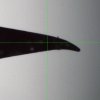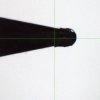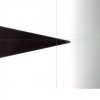With all the latest attention on Broadheads and arrow builds, the one thing that is seldom mentioned is Rockwell hardness. I realize the higher the number, the harder the steel. The harder the steel, the more difficult to sharpen but the edge is more durable. Also, the harder the steel the more brittle the steel and the softer steel has more chance of bending.
But, for instance, The GrizzlyStik black label heads are 58 Rockwell and the Overkill are 54 Rockwell. Otherwise, the heads look identical (other than the color of the ferrule). The Overkill cost about 40% less than the black label. That's quite a bit of a difference in price.
So, is gaining 4 Rockwell points worth spending $90 as opposed to $50?
But, for instance, The GrizzlyStik black label heads are 58 Rockwell and the Overkill are 54 Rockwell. Otherwise, the heads look identical (other than the color of the ferrule). The Overkill cost about 40% less than the black label. That's quite a bit of a difference in price.
So, is gaining 4 Rockwell points worth spending $90 as opposed to $50?




